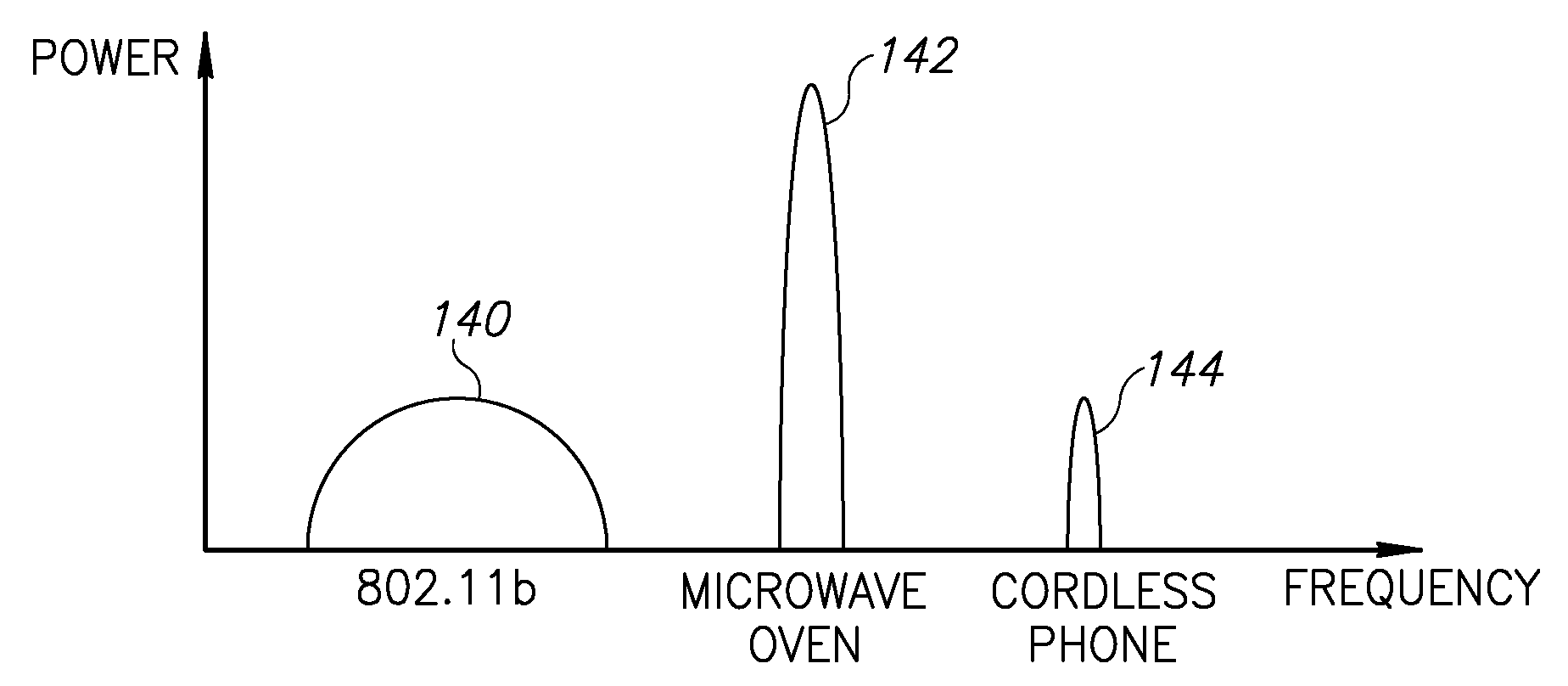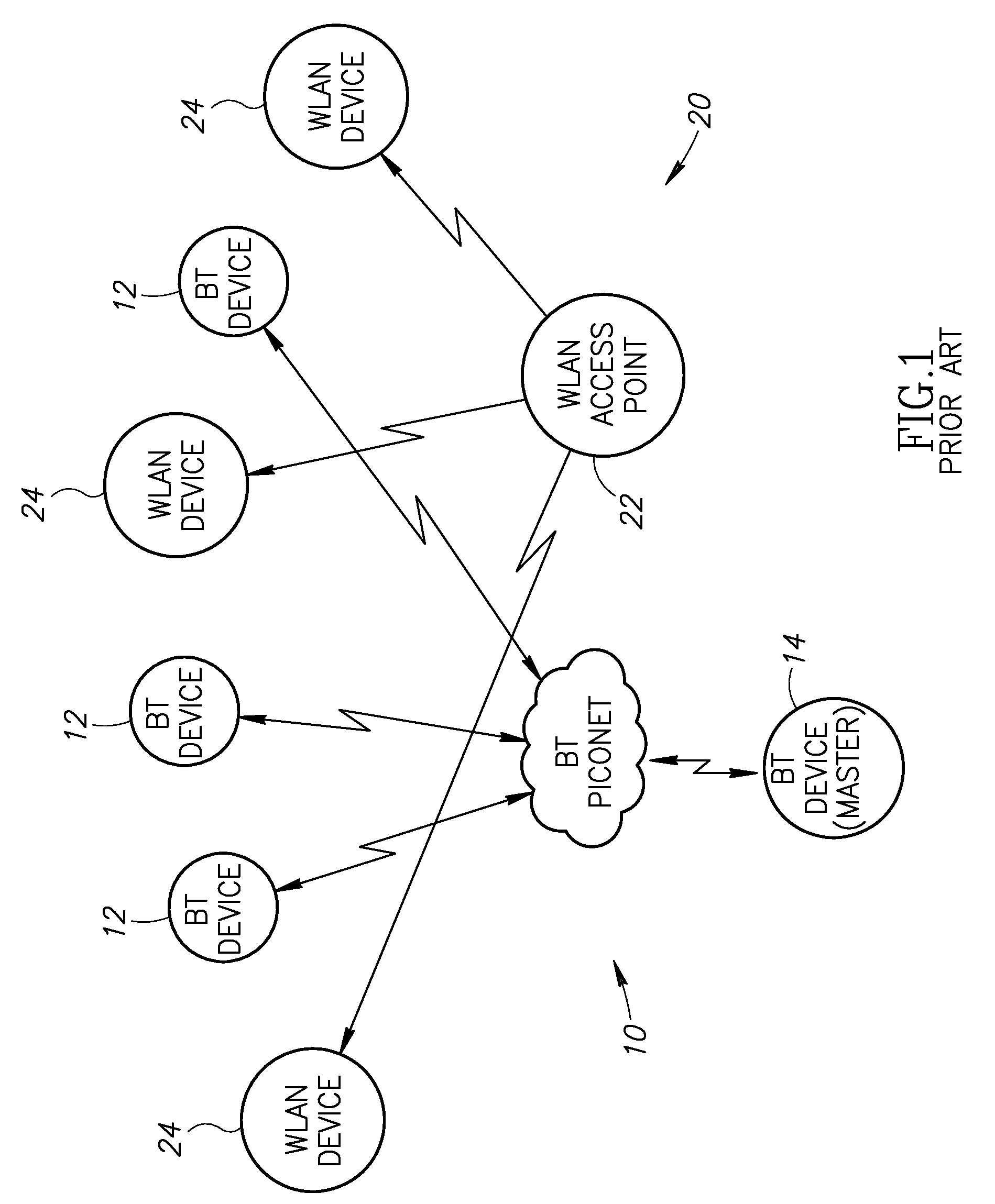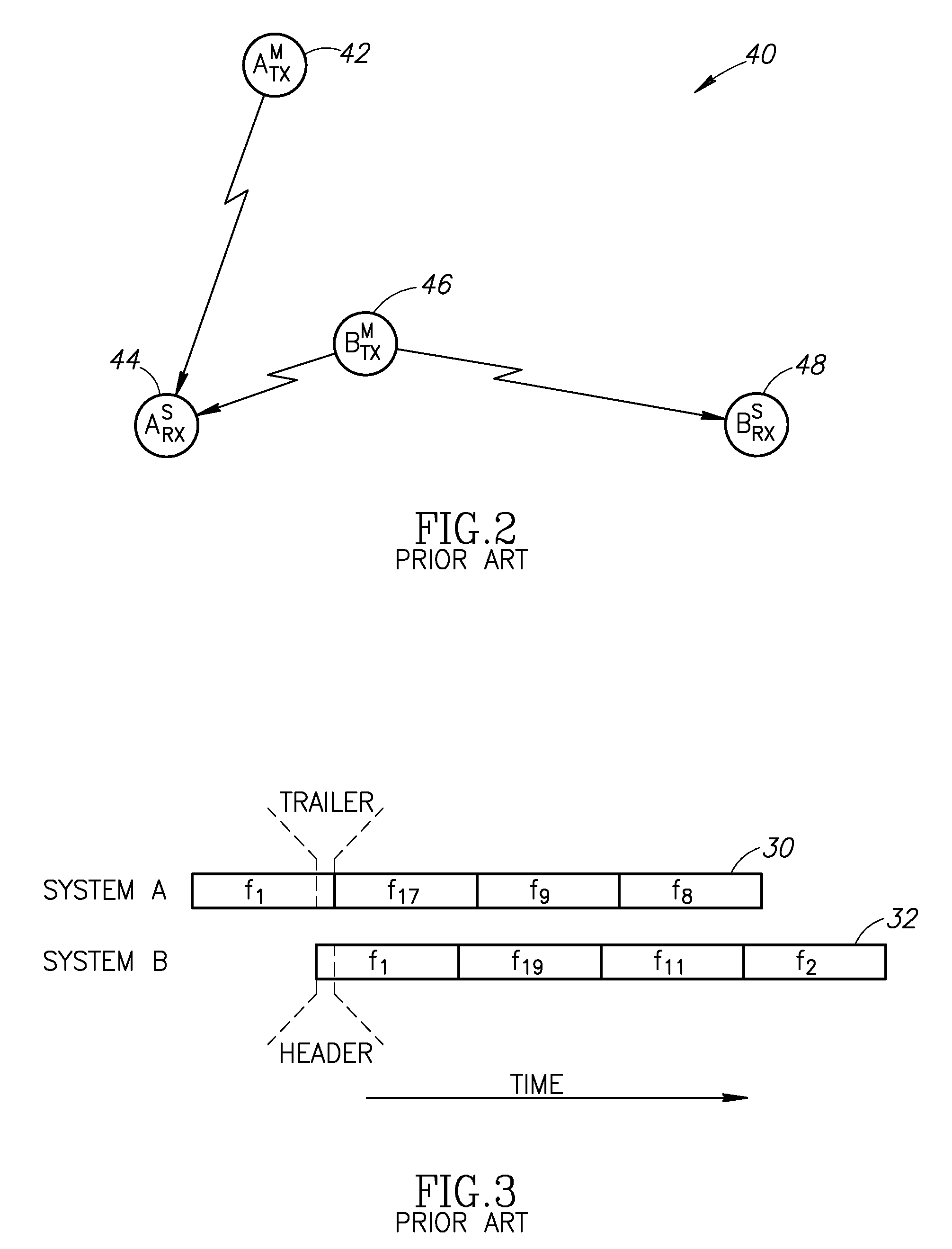System and method of adaptive frequency hopping with look ahead interference prediction
- Summary
- Abstract
- Description
- Claims
- Application Information
AI Technical Summary
Benefits of technology
Problems solved by technology
Method used
Image
Examples
Embodiment Construction
Notation Used Throughout
[0049]The following notation is used throughout this document.
Term Definition
ASIC Application Specific Integrated Circuit
AVI Audio Video Interleave
BMP Windows Bitmap
EDR Enhanced Data Rate
EPROM Erasable Programmable Read Only Memory
FCC Federal Communications Commission
FHSS Frequency Hopping Spread Spectrum
FIFO First-In First-Out
FPGA Field Programmable Gate Array
GPS Ground Positioning Satellite
HDL Hardware Description Language
IEEE Institute of Electrical and Electronics Engineers
ISM Industrial Scientific Medical
JPG Joint Photographic Experts Group
MP3 MPEG-1 Audio Layer 3
MPG Moving Picture Experts Group
OFDM Orthogonal Frequency Division Multiplexing
PDA Portable Digital Assistant
PER Packet Error Rate
RAM Random Access Memory
ROM Read Only Memory
RSSI Received Signal S...
PUM
 Login to View More
Login to View More Abstract
Description
Claims
Application Information
 Login to View More
Login to View More - R&D
- Intellectual Property
- Life Sciences
- Materials
- Tech Scout
- Unparalleled Data Quality
- Higher Quality Content
- 60% Fewer Hallucinations
Browse by: Latest US Patents, China's latest patents, Technical Efficacy Thesaurus, Application Domain, Technology Topic, Popular Technical Reports.
© 2025 PatSnap. All rights reserved.Legal|Privacy policy|Modern Slavery Act Transparency Statement|Sitemap|About US| Contact US: help@patsnap.com



